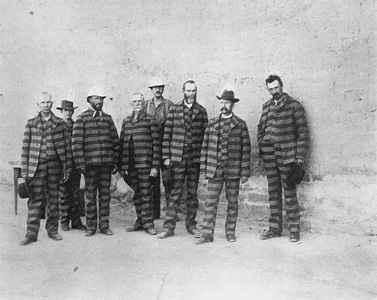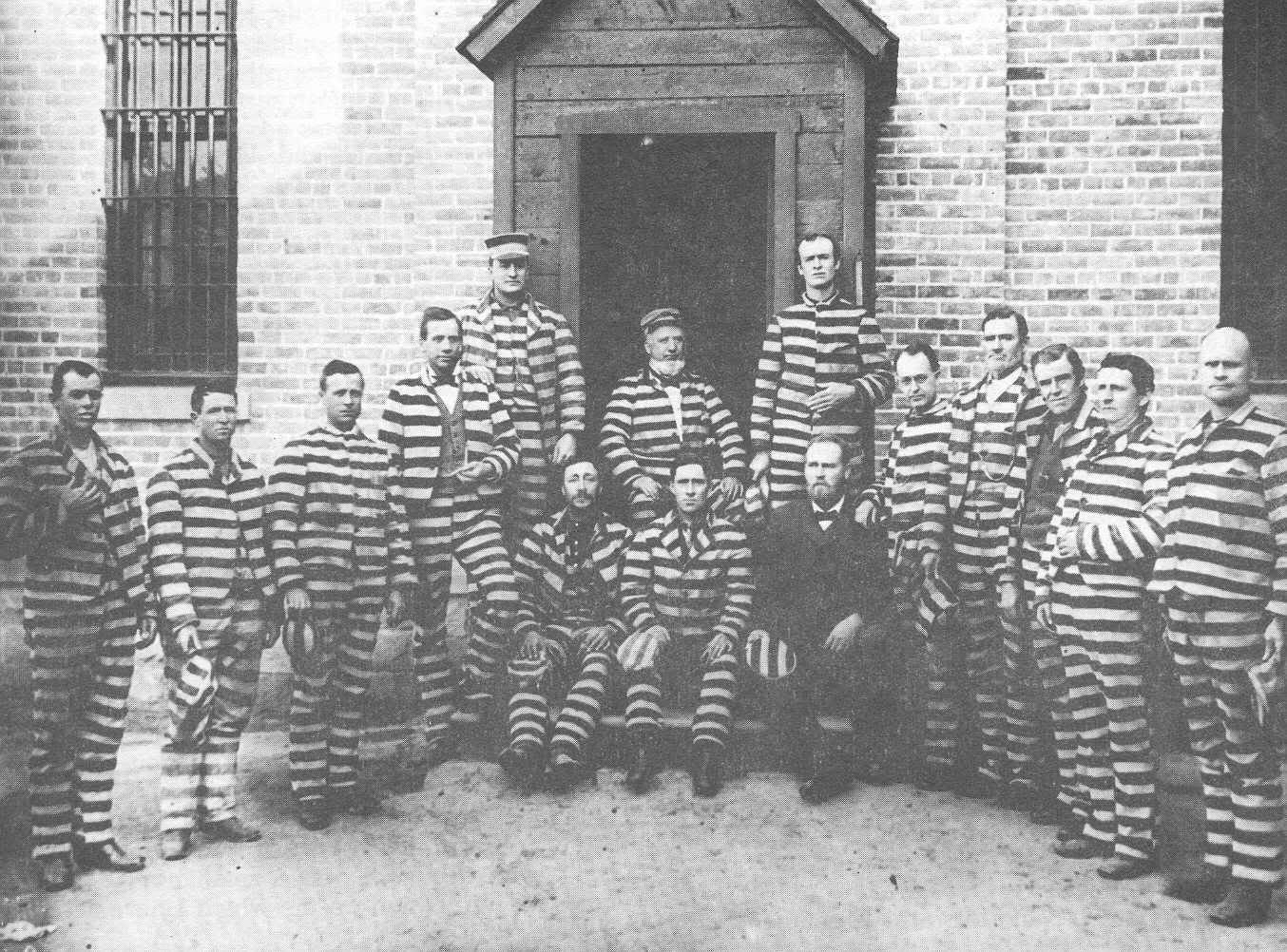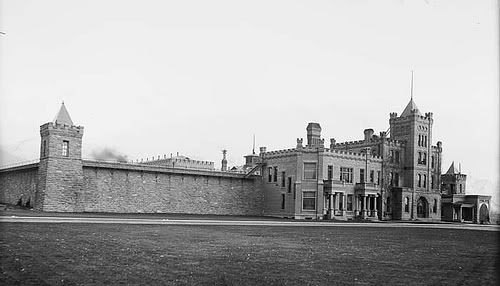
The concept of civil disobedience has been around for centuries--we see it as far back as ancient Greece. But the term coined as "civil disobedience" is a lot more modern. American author Henry David Thoreau popularized it in an 1849 essay, Civil Disobedience, dramatically urging that although one does not necessarily have to physically fight the government, it should not be supported if the disagreement is urgent enough. The essay had a wide influence on many later practitioners of civil disobedience. In it, Thoreau explained his reasons for having refused to pay taxes as an act of protest against slavery and against the Mexican-American War.
Civil disobedience, then, consists in publicly announced defiance of specific laws and policies which an individual or group believes to be unjust. The defiance must be publicly announced, since the point of it is to bring the injustice to the attention of the public and to effect change. The perpetrator must understand that this defiance is illegal and carries prescribed penalties. Willingness to accept such penalties is a crucial part of civil disobedience.
Modern civil disobedience theory began to take shape in the mid-1800's. This was precisely the time when Mormon settlers in Utah were faced with a conflict of conscience of their own against the government of the United States. Early Church leaders preached unequivocally that members of the Church must practice the principle of plural marriage in order to attain the highest degree of the celestial kingdom. At the same time, polygamy was illegal in the Territory of Utah.
Approximately twenty to thirty percent of the Mormons then living in Utah followed civil disobedience by contracting marriages which were against laws they felt were unjust. Although most of them attempted to conceal their marital arrangements, Church policy and publications openly and publicly defended the practice. Members understood that there would be penalties, and many served jail sentences for their illegal practices.

Under the United States government's constitutional power to enact laws governing territories, Congress enacted the Morrill Act (1862), making bigamy in a territory a crime punishable by a fine and five years in prison. The statute was upheld in Reynolds v. United States (1879), although the defendant argued that the law violated the First Amendment guarantee of the free exercise of religion. The Edmunds Act (1882), made bigamous cohabitation a misdemeanor and barred persons living in polygamy from jury service, public office, and voting. Over 1,300 Latter-day Saints were jailed as a result of the Edmunds Act. The Edmunds-Tucker Act (1887) disincorporated both the Church and the Perpetual Emigrating Fund, authorized seizure of Church real estate, disenfranchised women, and annulled Territorial laws allowing illegitimate children to inherit.

In 1890, after 40 years of Mormon civil disobedience, it became clear that plural marriage was leading toward the economic and political destruction of the Church. President Wilford Woodruff then withdrew the requirement for worthy males to take plural wives and announced a manifesto formally stating his counsel to Latter-day Saints to abide by antibigamy laws (D&C Official Declaration—1). The Manifesto was intended to end the legal confrontation between the U.S. government and the Church.
For several reasons, it took many years for the LDS Church to completely end the practice of plural marriage. The Manifesto was couched in what, for Mormons, was ambiguous language. Instead of a "thus saith the Lord" type of revelation, Wilford Woodruff instead publicly declared "that my advice to the Latter-day Saints is to refrain from contracting any marriage forbidden by the law of the land." In an address in Logan, Utah, he asked:
The question is this: Which is the wisest course for the Latter-day Saints to pursue—to continue to attempt to practice plural marriage, with the laws of the nation against it and the opposition of sixty millions of people, and at the cost of the confiscation and loss of all the Temples, and the stopping of all the ordinances therein, both for the living and the dead, and the imprisonment of the First Presidency and Twelve and the heads of families in the Church, and the confiscation of personal property of the people (all of which of themselves would stop the practice); or, after doing and suffering what we have through our adherence to this principle to cease the practice and submit to the law, and through doing so leave the Prophets, Apostles and fathers at home, so that they can instruct the people and attend to the duties of the Church, and also leave the Temples in the hands of the Saints, so that they can attend to the ordinances of the Gospel, both for the living and the dead?
Some apparently felt that the "wisest course" was to continue to live the fundamental spiritual principles they had been taught by the early leaders of the Church. Priesthood holders in top leadership positions continued to solemnize plural marriages, and much confusion ensued. Nonetheless, with the issuance of the Manifesto, Mormon civil disobedience had effectively ended. No longer was the Church attempting to change the laws of the land to align with conscience, but to comply in order to gain Statehood.
Never again would the LDS Church participate to such a degree in civil disobedience. Instead, members are urged to follow the laws of the land strictly, wherever they live. They feel that through proper legal conduct, they can gain the good graces of political authorities and thereby advance other Church objectives. For example, Blogger Silver Rain recently wrote:
"Because we are painstakingly compliant to local laws wherever we go, the LDS church has been granted many freedoms that other religions have not always enjoyed. Countries in the Middle and Far East have welcomed us in as service missionaries when we were not allowed to proselyte. We were one of few religions allowed practice in Cold War East Germany. Doors have opened to us multiple times in multiple places because we show respect to the law."
There's something in me that rather respects the willingness of those early members, and even Mormon offshoots today, who will take the risks of civil disobedience to take a stand for what they believe. Mainstream members are now urged to show caution, sometimes to the detriment of conscience. This quotation is a case in point:
“Our participation in life’s important events may be jeopardized if we fail to follow the rules contained in our Father in Heaven’s commands. Involvement in sexual sin, illegal drugs, civil disobedience, or abuse could keep us on the sidelines at key times.” (Bishop David Burton, ”And That’s The Way It Is,” Ensign, May 2003)
I disagree with Bishop Burton that civil disobedience should be included in that list of foibles. For, as Thoreau put it:
"Indeed, you serve your country poorly if you do so by suppressing your conscience in favor of the law — your country needs consciences more than it needs conscienceless robots."
________________________________________________
Picture (1): In the Utah penitentiary in 1885 are (L-R) Francis A. Brown, Freddy Self, Moroni Brown, Amos Milton Musser, George H. Kellogg, Parley P. Pratt, Jr., Rudger Clawson, and Job Pingree. Photographer: John P. Soule.
Picture (2): Utah Territorial Penitentiary 1888-9, located at the Sugarhouse site, now the northwest corner of Sugarhouse Park on 21st South & 13th East of Salt Lake City, Utah. Standing(L-R): Sylvester Frazer Jones, Simon Topham, Joseph S. Barney, Lorenzo D. Watson, Thomas Chamberlain, Henry Langford, Samuel Wooley, Nephi J. Bates, Frances Webster, Cornelius Mc Greavy, Jonathan Covington. Sitting on Step in center: Benjamin Perkins, William Butler, Francis M. Lyman. Doorway: George Q. Cannon.
Picture (3): The site of the Utah Penitentiary, selected by Brigham Young in October 1853, then a safe six miles from the center of the city. The first buildings of adobe brick, surrounded by a twelve foot wall, were occupied in January 1855. Early accounts indicate that escapes were frequent because of poor facilities and the lack of guards. In 1866 the penitentiary was renovated. The three buildings, wall and the guard houses were upgraded to stone. Later a dining hall, hospital and women's quarters were added. By 1882 the penitentiary included 244 steel cells and 250 capacity chapel. A new 19 foot wall enclosed 2 acres. A large area surrounding the prison was used by inmates to farm and raise livestock for inmate consumption.









No comments:
Post a Comment